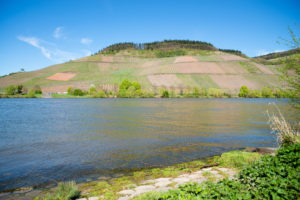
Annie Willson Bonner was quite adamant that the family’s heritage was Scottish, to the point that she became angry with her granddaughter on one occasion when the young girl wrote a school assignment claiming there might be some Irish in the family tree. Annie told the child that it would not do to have that kind of rumor circulate in the University of Chicago community. Annie’s husband, R.J. Bonner, was Chair of the Classics Department at the time.
Annie was mostly right (about the Scottish heritage, not the attitude!), with the exception of one interesting branch of the Willson family that emigrated from Germany in 1710: the Schauer family. Their story is well documented historically:
The Schauers: Refugees
The Schauers lived in southwest Germany, an area known as the Rhenish Palatinate. During the 17th and 18th centuries, French armies frequently invaded this part of Germany, committing atrocities and causing frequent economic hardship. There was also religious persecution of Protestants by the French, who were ardent Catholics.
In 1709 word passed through the Palatine communities that Queen Anne of England would offer passage to America for any German families that found their way to England. In addition, “letters from America” offered glowing descriptions of the natural wealth in the New World. Thousands of families, including our ancestors Michael Schauer (1679-1710) and Anna Magdalena (1679-1734), fled southwest Germany, sailing north on the Rhine to Rotterdam in the Netherlands, and finally crossing the North Sea to England. There they settled in an enormous refugee tent city to the south of London, where they lived in utter destitution.
The Schauers’ Immigration To America
A large number of immigrants overwhelmed English resources and charities, and the immigrants became a contentious political issue. Queen Anne decided on a typically British solution: the immigrants were partitioned. All German Catholics were sent back to Germany, whereas 4,000 Protestant families (including the Schauers) were boarded onto ships bound for America, on Christmas Day 1709.
At the last minute, English authorities decided that the ships needed to be accompanied by men-of-war ships to protect against French attacks during passage on the Atlantic. For three months, the English slowly made arrangements for the protector ships, and the German families lived on shipboard in the London harbor. The ships finally departed on Easter Day, 1710. The voyage across the Atlantic was brutally difficult and 1,700 of the passengers perished, including Michael Schauer. Anna Magdalena and the couple’s four children survived; their son (our ancestor), Johann Adam Schauer (1701-1762), was just 10 years old.
“Livingston Plantation” Work Camps
Anna Magdalena is documented on the “First Ship” list of arrivals in June 1710. The families who survived the Atlantic voyage were settled in the Hudson Valley on the so-called “Livingston Plantation” as indentured workers, where they were meant to pay back their passage to America with labor. The grand English plan had been for the Palatine Germans to harvest pine trees in the Hudson Valley, to obtain hemp, tar and pitch for use by the British Navy. However, this government program failed for lack of proper planning: the New York pine trees turned out to be the wrong variety and would yield nothing of use to the Navy.
Life in the work camps was harsh. Government support ended in 1712 and the Germans were on their own in the New World to build their new lives. Anna Magdalena remarried and relocated in Columbia County, New York, where her son Johann Adam Schauer married Maria Fritz in 1720. Johann and Maria’s daughter Anna “Hannah” Margarethe Schauer UE (1737-aft 1797) married Jacob Sypes (1738-1777) in 1755. Read her dramatic story of escape from the Colonies during the American Revolution in A Loyalist Icon.
Johann and Maria are our 6th-great-grandparents. Their granddaughter, Hannah Sypes, married Gilman Willson in 1791.
© 2013 W. Mullins
